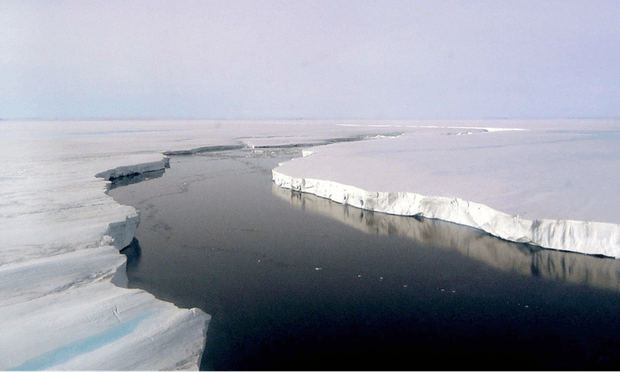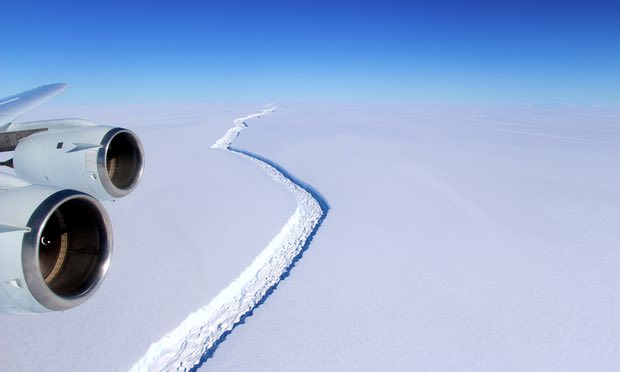Massive Larsen Ice Shelf Predicted to Break Soon

Crack in Larsen C ice shelf. Photograph: Ted Scambos, NSIDC
In the near future, a huge section of the Larsen C ice shelf in Antarctica will break off and collapse into the ocean, creating one of the largest icebergs in history. Larsen C is a major extension from of the West Antarctic ice sheet, and its health has implications for other ice in the region, and sea levels globally.
Project Midas, which gives frequent updates on the status of the shelf, recently wrote:
“In the largest jump since January, the rift in the Larsen C Ice Shelf has grown an additional 17 km (11 miles) between May 25 and May 31 2017. This has moved the rift tip to within 13 km (8 miles) of breaking all the way through to the ice front, producing one of the largest ever recorded icebergs. The rift tip appears also to have turned significantly towards the ice front, indicating that the time of calving is probably very close.”
From the Guardian: “Why does all this matter? Well it is important for a number of reasons. First, when an ice shelf melts or collapses, it can unpin other ice that is sitting on land, which allows it to flow more quickly into the ocean. It is this secondary effect – the loss of ice resting on land – that changes the rate of sea level rise. Loss of a major ice shelf can also activate ice that rests on bedrock topography that makes it fundamentally unstable – ice that, once moving, will move faster and faster, until a large region is afloat.”
See maps and read the full Guardian article HERE.

